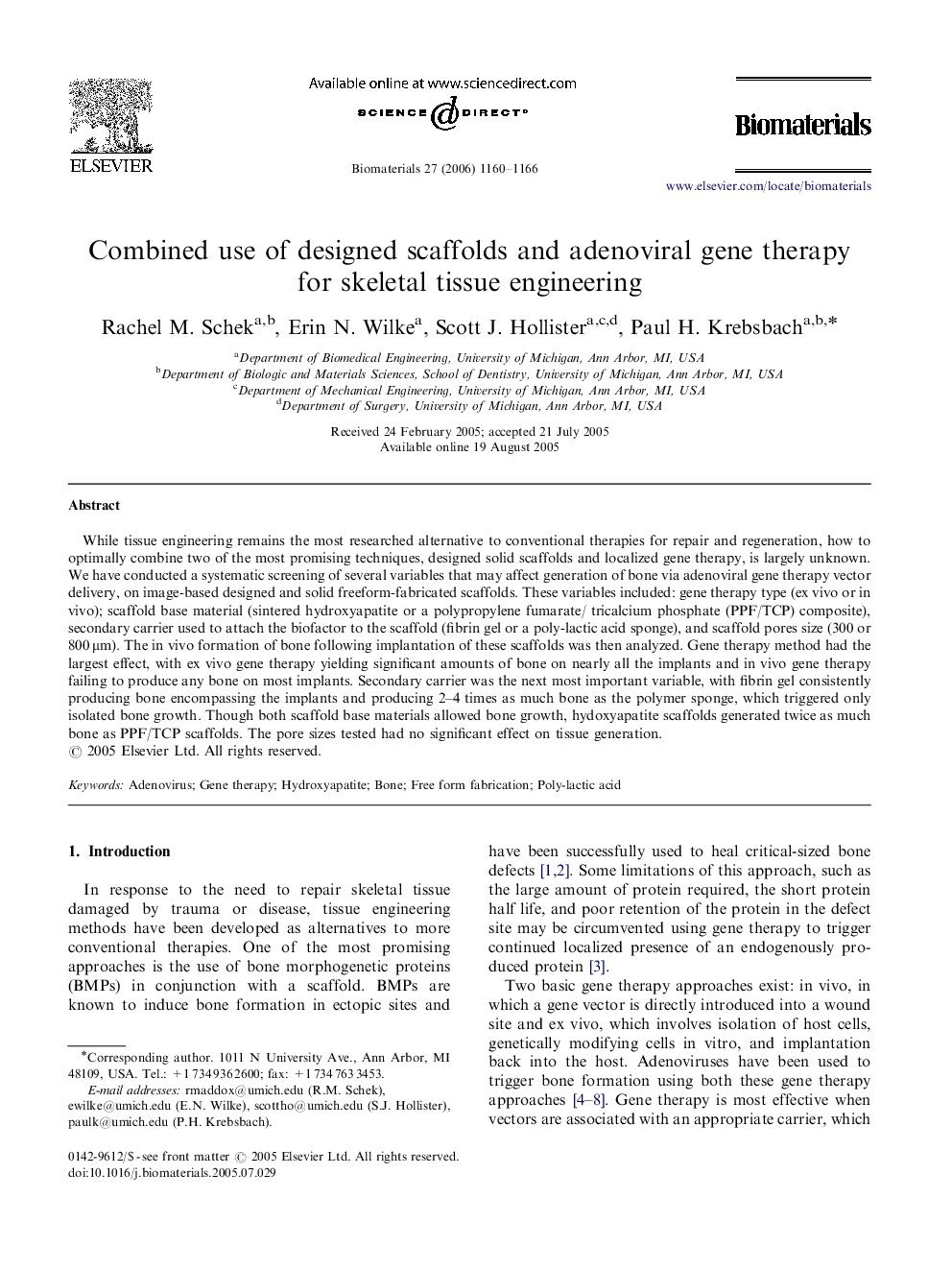| Article ID | Journal | Published Year | Pages | File Type |
|---|---|---|---|---|
| 12205 | Biomaterials | 2006 | 7 Pages |
While tissue engineering remains the most researched alternative to conventional therapies for repair and regeneration, how to optimally combine two of the most promising techniques, designed solid scaffolds and localized gene therapy, is largely unknown. We have conducted a systematic screening of several variables that may affect generation of bone via adenoviral gene therapy vector delivery, on image-based designed and solid freeform-fabricated scaffolds. These variables included: gene therapy type (ex vivo or in vivo); scaffold base material (sintered hydroxyapatite or a polypropylene fumarate/ tricalcium phosphate (PPF/TCP) composite), secondary carrier used to attach the biofactor to the scaffold (fibrin gel or a poly-lactic acid sponge), and scaffold pores size (300 or 800 μm). The in vivo formation of bone following implantation of these scaffolds was then analyzed. Gene therapy method had the largest effect, with ex vivo gene therapy yielding significant amounts of bone on nearly all the implants and in vivo gene therapy failing to produce any bone on most implants. Secondary carrier was the next most important variable, with fibrin gel consistently producing bone encompassing the implants and producing 2–4 times as much bone as the polymer sponge, which triggered only isolated bone growth. Though both scaffold base materials allowed bone growth, hydoxyapatite scaffolds generated twice as much bone as PPF/TCP scaffolds. The pore sizes tested had no significant effect on tissue generation.
